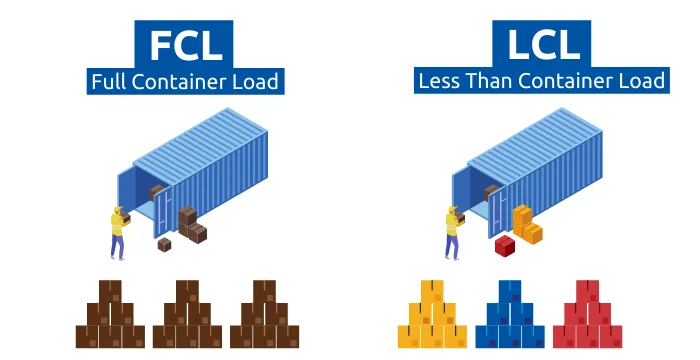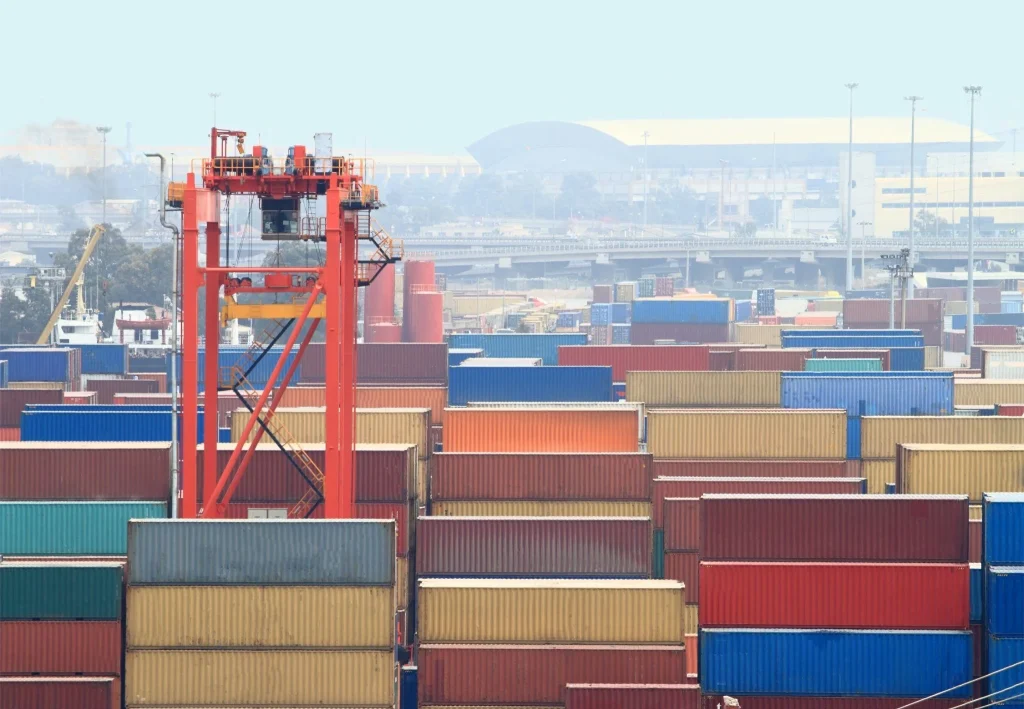Shipping goods internationally by sea is often the most economical and reliable method for many businesses. But when it comes to containerized shipments, there are two main options you need to understand: FCL (Full Container Load) and LCL (Less than Container Load). Choosing the right one can dramatically affect your cost, speed, risk, and overall supply chain performance.
If you’re considering using Sea Freight Services, Bismillah Logistics offers tailored solutions for its sea freight Services. Let’s walk through how to decide between FCL and LCL for your business needs.
What Is FCL (Full Container Load)?
FCL, or Full Container Load, refers to the practice of loading one shipper’s goods into an entire container. You lease the whole container, whether 20 ft, 40 ft, or 40 ft high-cube, and your shipment travels alone from origin to destination without mixing with others.
Typical container sizes used include:
- 20 ft (about 33 CBM interior)
- 40 ft (around 67 to 70 CBM)
- 40 ft High Cube (slightly more height)
FCL is ideal for businesses whose shipments can fill, or nearly fill, a full container. Because you control the whole container, you benefit from reduced handling, fewer delays, and stronger security. For example, if you’re a factory in Karachi exporting 500 cartons of garments, shipping via FCL gives you more control and reliability.
Key advantages of FCL include:
- Dedicated space with no sharing
- Fewer handling points, reducing damage risk
- More predictable scheduling
- Better per-unit cost when you fill the container
What Is LCL (Less than Container Load)?
LCL (Less than Container Load) is for shipments that are too small to fill an entire container. Under LCL, your goods are consolidated with those from other shippers into one container. At the origin, this process is called consolidation, and at the destination, it is deconsolidation.
For instance, if you have three pallets or eight cubic meters of goods, LCL lets you pay only for the space you use. The carrier or freight forwarder aggregates multiple small-shipment customers into one container, optimizing space and cost.
Key points about LCL:
- Cost is shared among multiple shippers
- More touchpoints during handling and deliver
- Slightly longer transit times due to consolidation schedules
- Ideal for small or irregular shipments

Key Differences Between FCL and LCL
Here is a side-by-side comparison of FCL and LCL across several important dimensions:
Aspect | FCL (Full Container Load) | LCL (Less than Container Load) |
Container Use | Entire container dedicated to one shipper | Shared container with multiple shippers |
Cost Structure | Higher total cost, lower per-unit cost | Lower total cost, higher per-unit cost |
Transit Time | Faster and more direct | Slower due to waiting for consolidation |
Handling | Minimal handling of a sealed container | Multiple handling events |
Security & Risk | High, as container stays sealed | Moderate, due to shared container |
Documentation Complexity | Simpler with one bill of lading | Slightly more complex with multiple parties |
Ideal Use Cases | Bulk shipments and regular exports | Small to medium shipments and market testing |
While cost is a major factor, it’s important not to make your decision purely based on the cheapest headline price. Speed, risk, predictability, and handling also matter, especially when goods are time-sensitive or high-value.
Advantages of Choosing FCL Shipping
When your shipment is large enough or frequent enough to justify it, FCL offers several strong benefits:
- Speed and Efficiency – No need to wait for consolidation, so your load moves more quickly.
- Security and Integrity – With a sealed container and minimal handling, there’s less chance of damage or pilferage.
- Predictability and Schedule Control – You decide pickup, loading, and routing.
- Economies of Scale – The more you fill the container, the lower your per-unit cost.
- Professional Image – For large volume exporters, FCL shows reliability and capacity.
For example, a company shipping 25 CBM of electronics monthly may find FCL cheaper per CBM than an equivalent LCL shipment, making it the better long-term choice.
Advantages of Choosing LCL Shipping
If your shipment is relatively small or irregular, LCL provides several advantages:
- Cost Efficiency for Small Loads – You pay only for the space you use.
- Flexibility for Small Businesses – New exporters can test demand in overseas markets without high upfront costs.
- Lower Inventory Requirements – You don’t need to stock large quantities just to fill a container.
- Efficient Space Use – LCL avoids wasted container space.
Easier Market Entry – Smaller companies can participate in trade earlier.
For example, small e-commerce exporters sending 5–10 CBM of mixed goods can save costs by choosing LCL instead of waiting to fill a full container.
When to Choose FCL Over LCL
Choose FCL when:
- Your shipment volume is 15–20 CBM or more.
- Your goods are high-value, fragile, or require extra care.
- You need faster transit with fewer delays.
- You ship frequently or at high volumes.
- You want complete control and lower risk of damage.
In these situations, FCL gives you better cost efficiency, speed, and reliability.
Cost Comparison Example
Choose LCL when:
- Your shipment is under 12 CBM.
You want to keep shipping costs low. - You are testing a new market or sending sample orders.
- Your shipping schedule is irregular.
- You prefer flexibility over volume commitments.
LCL is ideal for smaller or new businesses exploring export opportunities.
Cost Comparison Example
Here’s a simple example to understand when FCL becomes more economical:
- FCL (20 ft container): $2,000 for 28 CBM = about $71 per CBM
- LCL shipment: $1,000 for 10 CBM = about $100 per CBM
Although FCL costs more overall, it’s cheaper per unit of volume. Also note that LCL usually includes extra handling, documentation, and storage fees, which can raise the total cost. The key is to find the break-even point where switching to FCL makes financial sense.
Common Mistakes Businesses Make When Choosing Between FCL and LCL
- Focusing only on the lowest initial shipping rate
- Ignoring potential delays caused by LCL consolidation
- Underestimating risks due to increased handling
- Forgetting customs complexities in shared containers
- Failing to get expert guidance before booking
Avoid these mistakes by performing a full cost-benefit analysis and consulting a professional freight forwarder.
How to Decide the Right Option for Your Business
Follow these steps to make an informed decision:
- Assess your shipment size and frequency.
- Compare per-unit costs under both FCL and LCL, including hidden fees.
- Evaluate your product’s sensitivity and risk tolerance.
- Decide if speed or cost flexibility is your top priority.
- Consult experts in Sea Freight Services for a professional recommendation.
At Bismillah Logistics, our Sea Freight Services team helps you evaluate shipment volume, costs, and transit priorities. We calculate your break-even point and recommend the most efficient shipping solution for your needs.
How to Decide the Right Option for Your Business
Choosing between FCL and LCL depends on your shipment volume, risk tolerance, and business goals.
- If you ship in large volumes, FCL offers better control, faster delivery, and lower per-unit costs.
- If your shipments are small or irregular, LCL gives you flexibility and affordability.
When you analyze all factors and get expert guidance, your logistics decision becomes more strategic and cost-effective. Whether you are shipping one pallet or multiple containers, Bismillah Logistics Sea Freight Services ensures your goods move safely and efficiently to their destination.

